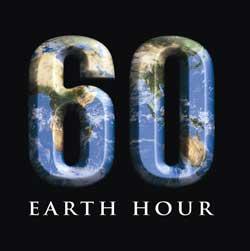Forwarding Address: David Livewell’s Woven Light and the Art of Andrew Wyeth

Sadly, the memorials to the art of Andrew Wyeth since his death early last year have been few. I personally find it difficult to understand the lack of response to the passing of such an important figure in American art. Wyeth’s own wish to be left alone has been respected, perhaps overrespected, by his family, adding to the deafening silence. David Livewell’s Woven Light: Poems and Photographs from Andrew Wyeth’s Pennsylvania breaks that silence through words and images that recall Wyeth’s art but also make us ponder its significance not only to him, but also to us.
In his introduction, Bo Bartlett, one of the few young artists Wyeth allowed into his inner circle, writes that Woven Light “reveals the deeper layers of Andrew Wyeth’s art. These words will be a joy to those familiar with the specifics of Wyeth’s subjects and will bring a new awareness of the paintings to a broader audience.” Through these intimate poems and photographs, Livewell looks to bring this private man’s art to the public.
Livewell has worked on these poems for nearly a decade, paying as much attention to detail as Wyeth did when he painted his tempera paintings with layer upon layer of pigments—the “woven light” of Livewell’s title. [Full disclosure: Mr. Livewell is a good friend of mine and lists my name in the acknowledgments of Woven Light.] This “woven light,” however, is also the light of the past that always illuminated the present in Wyeth’s life and art, creating a seamless tapestry in which the past and present are continually interwoven. Taking his encyclopedic knowledge of Wyeth’s life and art, Livewell addresses the artist by entering imaginatively into the paintings and walking away with the meanings Wyeth may have intended as well as the meanings he finds there. In Winter, 1946: The Artist Addressed, Livewell addresses Wyeth using the painting that Wyeth himself called a “portrait” of his late father N.C. Wyeth (killed when his car stopped on tracks near that hill and was struck by a train) that shows only a young man racing down the hill:
…Your past becomes
An engine-whistle’s echo stuck in time.
His death has tempered you to paint your hate
As well as love. Untethered from his snare,
But fixed in Pa’s cold stare,
You now begin the art that is your fate.
Andrew the young lion known for vivid watercolors came “untethered” from his father’s influence and found a new direction in the somber, meditative works that filled his life for the next seven decades. Livewell goes on to examine nearly all of the milestone works in Wyeth’s career to paint a full poetic portrait of the man. In total, these add up to a 360 degree view of Wyeth’s mind and soul.
In a blurb to the book, Pulitzer-Prize winning poet and former Poet Laureate of the United States Richard Wilbur remarks, “David Livewell has the alert, divining eye that Andrew Wyeth’s paintings call for. He captures the detail of each picture admirably, and the brooding romantic atmosphere of some of them.” Like Wilbur, Livewell writes in the “old school” style of poetry and infuses meter and rhyme into his works almost in defiance of modern, ruleless taste, just as Wyeth himself seemed out of place in the world of modern art. Livewell’s verse maintains its accessibility without losing any complexity or subtlety, again, just as Wyeth’s paintings seemed just to be of trees or fields but were always about much more, namely himself and we, the viewers. Livewell’s verse and Wyeth’s paintings are truly the marriage of true minds.
In addition to these memorable poems, Livewell’s photography brings Wyeth’s world vividly to life. Livewell gained exclusive access to the Kuerner farm that Wyeth frequented and painted over three generations of that family’s life, including that of Karl Kuerner, III, who also became an artist. A photo of the actual attic in which Wyeth painted the iconic Karl shows the menacing meat hooks Wyeth used as emblems of the menacing man he knew as a friend and substitute father. Livewell also shows for the first time the room in which the mysterious Helga Testorf napped while serving as Karl’s nurse and later secretly posed for 14 years for Wyeth in what became known collectively as The Helga Pictures, the suite of 240 sensual nudes and other portraits that catapulted Wyeth’s name back into the limelight in 1985. Livewell accompanies these groundbreaking photos with evocative images of Wyeth’s Chadds Ford environment throughout the seasons that recreate what Wyeth himself saw and then transformed into his art.
Woven Light will captivate any fan of Andrew Wyeth’s art. To know and appreciate Wyeth is to enter into his world. Woven Light is a multimedia key to the door leading into Wyeth’s world. Livewell sent these poems to the artist himself years before his death. “What a fine set of poems about my paintings,” Wyeth responded in a letter. “They are powerful statements and deeply moving to me.” If you’ve ever been deeply moved by the art of Andrew Wyeth, or any other artist for that matter, Woven Light will move you to look more penetratingly and address art more intimately as you move forward through life.
[Image: The interior of the Kuerner Farmhouse in which Andrew Wyeth painted. This table scene inspired Wyeth’s painting Groundhog Day.]
[Many thanks to Mr. Livewell for the image above and a review copy of Woven Light: Poems and Photographs from Andrew Wyeth’s Pennsylvania]





